Royal Navy warships have wrapped up the largest military exercise of 2020 in European waters. Frigate HMS Kent and minehunter HMS Ramsey flew the flag for the Royal Navy, while RAF Typhoons stationed in Lithuania joined in the aerial element of NATO’s Baltops.
Follow Navy Recognition on Google News at this link
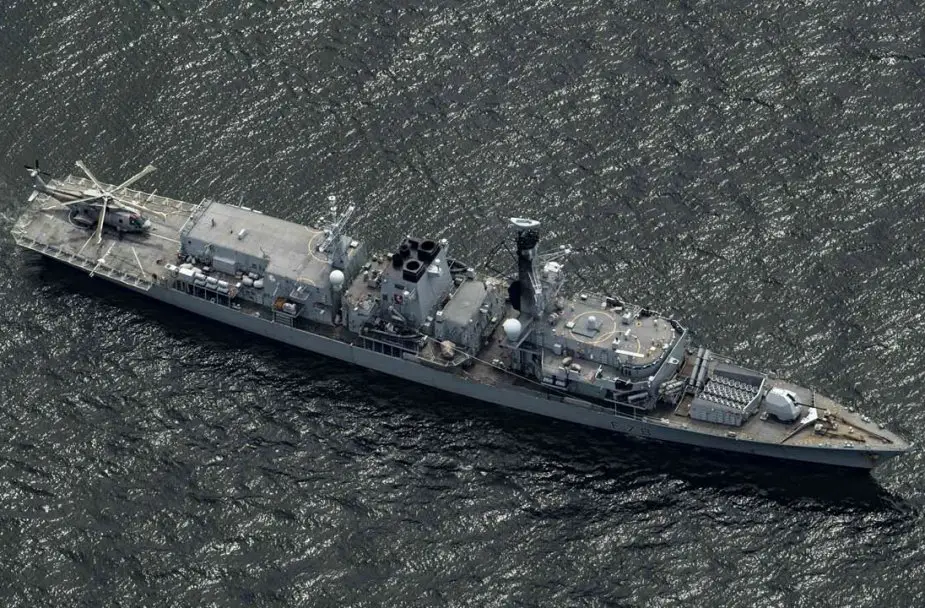 The British Royal Navy Duke-class frigate HMS Kent (F78) sails in the Baltic Sea during exercise Baltic Operations (BALTOPS) 2020, June 15, 2020. (Picture source: Royal Navy)
The British Royal Navy Duke-class frigate HMS Kent (F78) sails in the Baltic Sea during exercise Baltic Operations (BALTOPS) 2020, June 15, 2020. (Picture source: Royal Navy)
Frigate HMS Kent and minehunter HMS Ramsey flew the flag for the Royal Navy, while RAF Typhoons stationed in Lithuania joined in the aerial element of NATO’s Baltops.
Crews of both ships say the two-week workout proved to be a supreme test – and makes them better prepared for global challenges, individually or working side-by-side with our allies.
More than two dozen vessels, led by the US Navy’s amphibious command ship Mount Whitney, a similar number of aircraft and upwards of 3,000 military personnel threw their hat in the ring for the 49th iteration of Baltops.
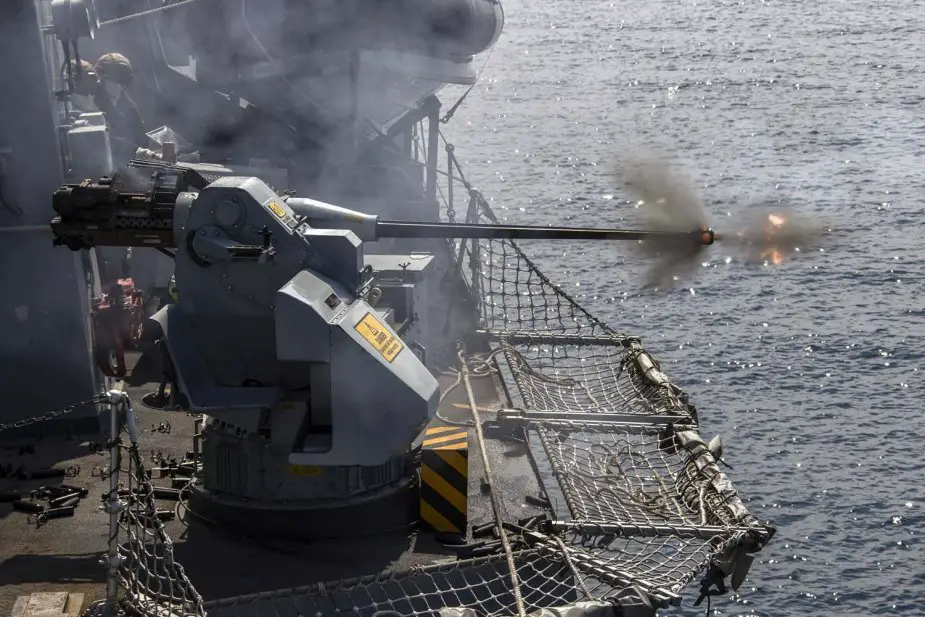 HMS Kent's weapons crews practice close range gunnery whilst on BALTOPS 20. (Picture source: Royal Navy)
HMS Kent's weapons crews practice close range gunnery whilst on BALTOPS 20. (Picture source: Royal Navy)
The exercise underlines the importance of the region to NATO – and demonstrates the ability and resolve of the alliance and partner nations to safeguard the freedom of nations on its shores, as well as keeping the sea lanes open.
Planners gave participants seven days to hone individual and collective skills, training side-by-side in numerous demanding scenarios (anti-submarine warfare, air attacks – including Banshee drones which bore down on Kent’s upper deck gunners – resupplying on the go, and combined manoeuvres), before a rather more free-flowing four-day-long tactical exercise.
The Portsmouth-based frigate was assigned to the ‘Orange Forces’ from the fictional state of Bothnia – the enemy – in this year’s scenario, which meant her sailors had to approach Baltops with a different mind-set.
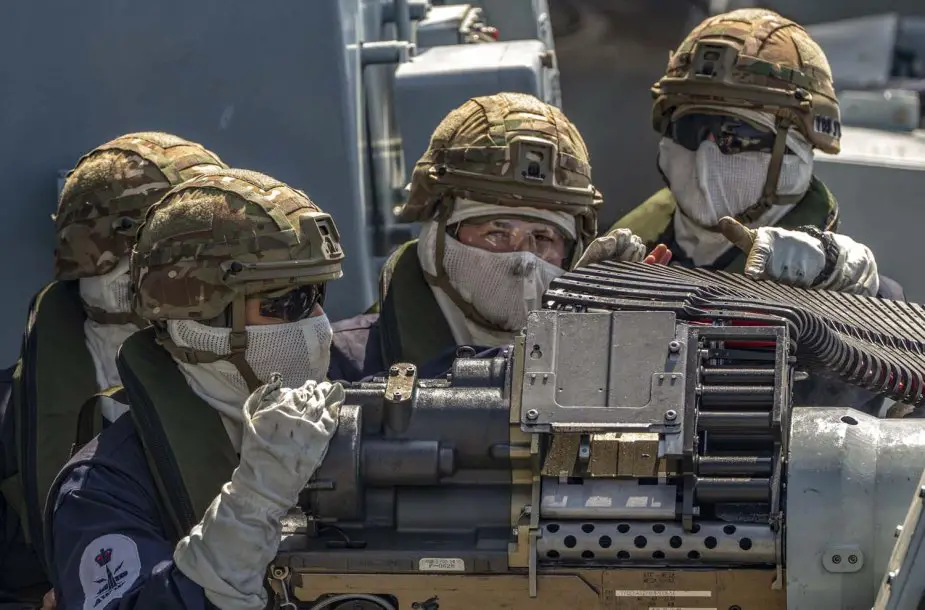 HMS Kent's weapons crews practice close range gunnery whilst on BALTOPS 20. (Picture source: Royal Navy)
HMS Kent's weapons crews practice close range gunnery whilst on BALTOPS 20. (Picture source: Royal Navy)
“Playing the bad guys for a change rather than ourselves has been good. It really forced us to look at how we normally do things, then doing something sneaky instead. It has been really busy, but I have definitely learned a lot,” said above water warfare specialist, 31-year-old Able Seaman Jonathan Mills.
Ramsey, meanwhile, has been involved in nine days of intensive minehunting alongside seven ships – plus two drones from the German Navy – especially close to the Danish and Swedish coasts.
The collective training has been on a much larger scale than the Faslane-based warship is used to, allowing the 40-strong ship’s company to take their training and expertise to the next level as they located – and ‘neutralised’ – practice mines in challenging conditions.
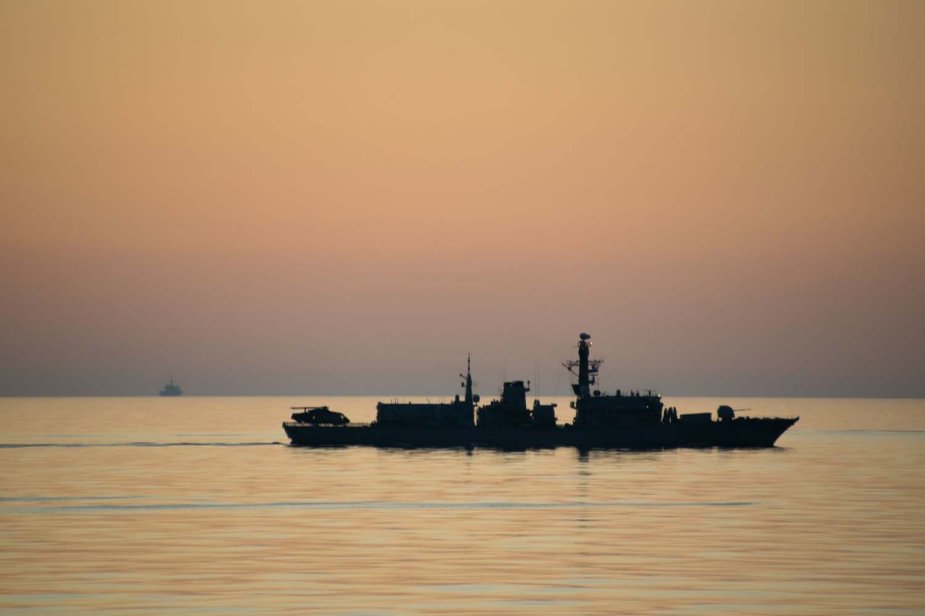 Royal Danish Navy HDMS Esbern Snare (L17) observes sunset during BALTOPS 2020, June 10. (Picture source: Royal Navy)
Royal Danish Navy HDMS Esbern Snare (L17) observes sunset during BALTOPS 2020, June 10. (Picture source: Royal Navy)
“It has been really interesting to see other nations conduct mine hunting operations and observe how they do it, especially the German Navy using autonomous drones during the exercise,” said mine warfare specialist Able Seaman Harry Streeter.
“The Royal Navy is already using – and accelerating the introduction of – new autonomous and remote systems into mine warfare, so to see how other nations employ similar technology has been great.”
Alongside the latest technology, more traditional methods of rendering mines were practised, with Ramsey’s clearance divers plunging into the depths; even in mid-June the water temperature in the Baltic only scrapes into the low teens Celsius.
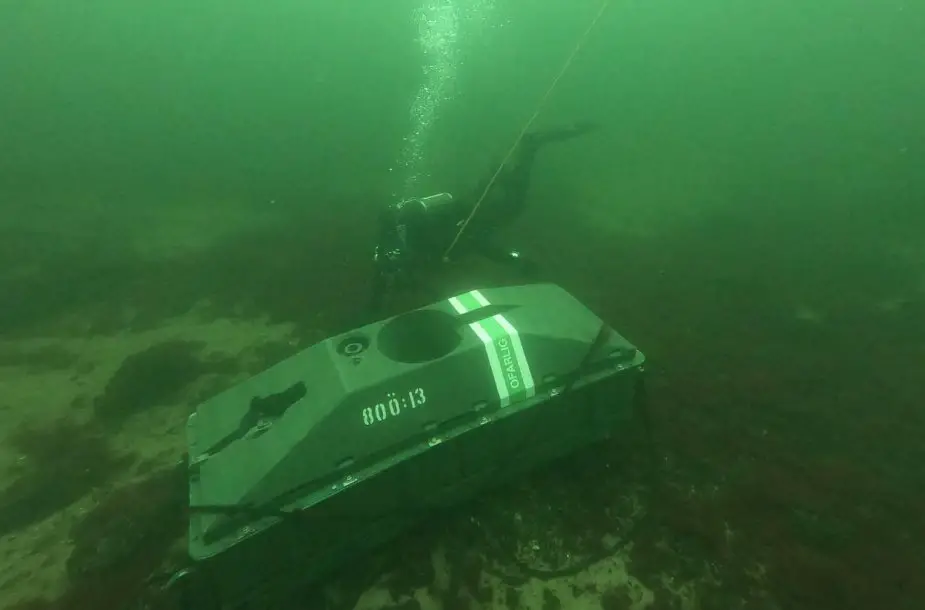 Estonian diver inspects an inert mine during BALTOPS 2020, June 10. (Picture source: Royal Navy)
Estonian diver inspects an inert mine during BALTOPS 2020, June 10. (Picture source: Royal Navy)
“Baltops has offered mine countermeasures training on an impressive scale and has allowed Ramsey to develop her operational capability, as well as our understanding of how we can support and protect collective UK and NATO interests,” said Lieutenant Commander Joel Roberts, Ramsey’s Commanding Officer.
Ramsey is remaining in the Baltic with a NATO minewarfare group while Kent is concentrating on training around the UK and in the North Atlantic, before a well-deserved period of maintenance and leave in her home port of Portsmouth over the summer.



